Matador Network's Blog, page 701
February 17, 2021
Alaska is lifting COVID-19 test req
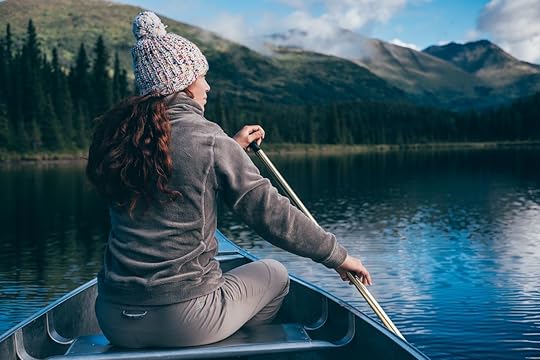
After months of requiring travelers to show proof of a negative COVID-19 test before entering the state, Alaska is now relaxing that rule as it transitions into a new recovery phase. Previously, travelers were required to show evidence of a negative PCR test, taken within 72 hours of the trip, at the airport upon arrival. New health advisories issued by the state on Sunday included the removal of this requirement.
While outlining the next phase of Alaska’s COVID-19 response, Governor Mike Dunleavy said, “My administration will begin moving Alaska, its economy and our lives forward through this transition and recovery process. Make no mistake about it, the virus may be with us for some time. But the data shows that the worst is most likely behind us.”
Although it’s one of the most remote states in the country, Alaska had some of the strictest entry protocols for several months, requiring tests for incoming travelers when the majority of the US did not. Since Alaska is on a positive trajectory with regard to mitigating COVID-19 transmission, officials made the decision to relax the testing requirement.
“No matter what metrics you look at,” said Dunleavy, “Alaska is doing pretty good, probably better than most states. And so this gives us the confidence that as we move forward, we’re going to continue to manage this virus as well or better than most other locales.” 
The post Alaska no longer requires a negative COVID-19 test to enter appeared first on Matador Network.

February 16, 2021
Woman road trips collecting wood

A cross-country road trip visiting national parks is a pretty common itinerary. A road trip where sawmills are your focus is much more unique. Xyla Foxlin planned a trip to do exactly that.
Foxlin drove across the country — from Cleveland, Ohio, to Los Angeles, California — visiting a sawmill in every state she visited and making a map of the local wood she collected on her way. She posted pictures of her experience, and the map, on Reddit and answered questions from Redditors about the trip. She also released a YouTube video documenting her travels and highlights from her road trip.
In the comment section on Reddit, Foxlin explains that she managed to get some now-rare American Chestnut in Tennessee and petrified wood in Utah, as well as many other cool finds. Foxlin is also accepting wood donations from other states, and she has already received samples from Hawaii and Alaska.
The woods used on Foxlin’s map are:
Ohio: mapleKentucky: Kentucky coffee treeTennessee: American chestnutArkansas: shortleaf pineOklahoma: persimmonTexas: mesquiteNew Mexico: alligator juniperColorado: northern white cedarUtah: petrified woodNevada: cottonwoodCalifornia: red gum eucalyptus and redwood
Photo: Xyla Foxlin/Youtube
Her video goes into great detail about the unique forests in each state and what distinguishes the wood found there, as well as the history of the sawmills she visits. Beyond simply visiting sawmills and forests, you’ll also see Foxlin canoeing, camping, and exploring some of the country’s most beautiful areas, which might inspire you for your next road trip. 
The post This woman drove cross-country visiting a sawmill in each state and created a map of local wood appeared first on Matador Network.

Nashville Airbnbs for bachelorettes

We hope you love the spaces and stays we recommend! Just so you know, Matador may collect a small commission from the links on this page if you decide to book a stay, and listed prices are accurate as of the time of publication.
If you’ve ever planned a bachelorette party, you know the process is a chore. From setting up the “Hey y’all” group email thread to having the responsibility of making sure the activities are on point for the bride, it can feel like a military operation. Choosing where to stay is one of the most important elements. Finding a house big enough to suit the needs of the group can be tricky, but over the last decade, Airbnb has made that a little easier. Regardless of which US city you land on, there are lots of options of large houses that make a perfect base for a bachelorette weekend away.
This is definitely the case in Nashville. Music City has a great range of listings that are not only affordable but have heaps of character. With its Southern hospitality, live music on every corner, great food scene, and world-class nightlife, the city is perfect for your (or anyone in your crew’s) bachelorette party.
Finding a large house around the energetic downtown area, the more upscale area of The Gulch, the hip 12 South, and the historical Germantown is a must. Most of the listings below are either within these parts of town or a quick 10-15 minute ride away. The popularity of bachelorette parties here also means that the hosts of Airbnbs are geared up with tips on the best places to eat, experience live music, and, of course, party. From an artsy townhouse to houses with epic rooftops — and for those who need a little helping hand with planning — here are the best Airbnbs in Nashville for a weekend bachelorette.
1. Three-bedroom townhouse, ten minutes from downtown
Photo: Airbnb
Located in the Trinity Corridor of East Nashville, this three-bedroom townhouse is ideal if you are wanting to be close to downtown attractions. That said, you don’t need to venture to Germantown or Broadway if you’d rather stay local, as this Airbnb’s street has lots of small bars and restaurants that are packed with character and live music. Its open-floor plan with a dining room, kitchen, large bar, and living room make this a perfect place for a bachelorette. The house has three bedrooms, two with ensuites, and there’s private parking in a secure garage for two vehicles. You can’t really beat this place for its location, but reviews also nod to the host’s attention to detail and helpful trip-planning tips.
Price: $111 per night
2. Four-bedroom new build home with rooftop deck
Photo: Airbnb
This new build modern home sleeps nine and is also just a couple of miles from 12 South and a few from The Gulch and downtown. Although it’s a prime location, guest reviews rave about the residential locale, so you can enjoy a little peace and quiet when required. Its vaulted ceilings, natural light, and special little design and decor details make this a popular booking. French doors lead out to the balcony from the living room, an ideal place to sit out and have a few drinks in the evening.
Price: $135 per night
3. Modern mid-rise in downtown
Photo: Airbnb
This downtown condo sleeps eight and has a pool, gym, and a gated parking garage. All of downtown’s bars, live music joints, and great restaurants are within walking distance, making this an ideal booking if your group wants to explore Nashville’s epic nightlife. This accommodation also has a balcony space with sweeping views over the city, and the pool area has a BBQ and public WiFi, so you can stream your country playlist while grilling with friends.
Price: $110 per night
4. Three bedroom house with 360-degree rooftop
Photo: Airbnb
Situated in East Nashville, this three-bedroom house comfortably sleeps 10 guests. The house is spread over three stories, the highlight being the top floor. The rooftop patio comes with a wet bar and has lots of seating, but there are also two other outdoor areas, one with a dining table. East Nashville is one of the city’s hipper neighborhoods — being home to some of the best places to eat and drink in the city — but also Shelby Bottoms Park, a lovely green space for those who want some respite. The house comes with all modern amenities, smart TVs, a decked out kitchen, and self check-in.
Price: $139 per night
5. Four bedroom modern home near 12 South
Photo: Airbnb
This three-story house is about as central as you can get. Located only two miles from downtown, Music Row, Vanderbilt University, Edgehill Village,12 South, and The Gulch, the house is an Uber ride away from the best of Nashville. Past guests rave about the host’s professionalism, thoughtful touches, and local advice. The basement level has a game room with a foosball table, perfect for more competitive members of your group.
Price: $98 per night
6. Fun, centrally located new construction
Photo: Airbnb
Sleeping 10 and situated in the heart of the city, this new build also has a rooftop patio with a grill and stunning views of Music City. Reviews note that this is a great place to book if you are looking for somewhere to stay with a group of friends, not only because of its centrality but also due to its spacious layout and fun amenities. Its colorful decor makes this listing stand out — with a neon “Nashville” sign being the perfect backdrop for an iconic holiday snap.
Price: $158 per night
7. Beautifully designed two-story house in downtown
Photo: Airbnb
This Airbnb Plus listing is not somewhere you’d book if you have someone in your group who enjoys red wine — the decor is a stunningly crisp, clean white throughout. Guests even state that the photos of the interior don’t do this place justice. The three bedrooms come with stylish fittings and memory foam mattresses, and the kitchen and formal dining area is a perfect place for a nice sit-down dinner. If you are looking to party hard, this is not going to work, but if you want somewhere close to the action that is aesthetically beautiful and clean, this is a solid option.
Price: $129 per night
8. Luxury home with huge rooftop space
Photo: Airbnb
This 11-bed listing’s main attribute is its huge private roof-deck with outdoor dining, large lounge area, and beautiful views over downtown. It’s a perfect space to book during the spring-summer months, but if you are traveling during the high-season, we recommend contacting the hosts and booking in advance. The house itself is open planned and has four bedrooms, a kitchen with a modern breakfast bar, a comfortable living room, and four chic, modern bathrooms.
Price: $152 per night
9. Home of local artist in East Nashville
Photo: Airbnb
If you want to experience vintage Nashville, this three-bedroom house is the property to book. The house’s interior is white with accents of leather, copper, and greenery from the well-placed indoor plants. It’s clear the owner of this booking has an eye for design as this is one of the more beautiful large houses you can book on Airbnb in the city. It would make an ideal place for a group who want to balance seeing the sights of Nashville with the security of having a lovely place to come home to at the end of the day.
Price: $114 per night
10. Instagram-worthy, four-bedroom colorful townhouse
Photo: Airbnb
From the banana-print scratch-and-sniff wallpaper to the bubble gum machine and retro arcade room, this Airbnb certainly stands out as being the brightest, most fun, and unforgettable of all the listings here. Its five — yes five — floors are packed with color and comfortably sleep 12 guests. This is one of 12 specially designed themed houses within a complex in the center of the city. Fashioned for groups and those who want to set their inner child free, this booking is noted as being ideal for bachelorettes.
Price: $158 per night
11. Country-chic townhouse a walk away from Broadway’s live music spots
Photo: Airbnb
Another Airbnb Plus listing, this townhouse is a quick walk away from Broadway but is located in a quiet street. The living room is bright, with a corner sofa, dining table, and vintage design details. The open-planned kitchen is decked out with all the modern amenities a home cook would need and also has high windows allowing for ample natural light. The three bedrooms are luxurious and come with room-darkening shades — fitting for those who want to enjoy the best of Broadway’s live music scene until the early hours of the morning.
Price: $159 per night
More like thisWhere to Stay11 stunning yet affordable Airbnbs on Kauai, HawaiiThe post The best Airbnbs in Nashville for a bachelorette getaway appeared first on Matador Network.

Ice volcano in Kazakhstan

The words “ice” and “volcano” might appear to be total opposites, but not in Almaty, Kazakhstan, where an ice volcano is drawing crowds this winter.
View this post on InstagramA post shared by ✈ Әуедегі қыз (@himmelvind)
The 45-foot ice mound, currently occurring in the city of Almaty in Kazakhstan, is caused by an underground hot spring that occasionally launches hot water and steam into the air. Water freezes around the edges of the spout and builds up, forming a hollow mound. While there is no lava flowing from the mound, its steaming top gives it the appearance of a volcano.
View this post on InstagramA post shared by Наиль (@nail_negmetzhan)
According to the Weather Channel, “Though the ice cone resembles a volcano, its formation is in no way connected to any actual volcanic eruption. The ice structure is formed when the water from the underground hot spring spews up into the air, and gradually freezes as it falls back down. The process gives rise to an impressive cone-like structure on an icy plain. True to its nature, this ice volcano is also oozing out water particles from the top of its hollow structure.” 
View this post on InstagramA post shared by ✈ Әуедегі қыз (@himmelvind)
More like thisOutdoor9 bizarre weather phenomena and where to see them
The post An ice volcano is spewing steam in Kazakhstan appeared first on Matador Network.

Las Vegas’ new non-smoking resort

Taking the smoking and gambling out of Las Vegas is like taking the lobster and leaf-peeping out of Maine. You might think that a non-smoking, non-gambling hotel would be a rather unattractive destination for Vegas visitors, but this new luxury resort hopes to attract a different kind of tourist. Majestic Las Vegas, set to open in 2024, will be located two blocks from the Strip across from the Las Vegas Convention Center, and is designed as a luxurious and wellness-focused destination.

Photo: Majestic Las Vegas
The five-star resort and 720 suites will abound with amenities such as a landscaped pool with 50 cabanas overlooking the Strip; a state-of-the-art fitness center; and a world-class spa that tests the limits of luxury. It will also feature six freestanding restaurants around a European-style piazza where there will be dancing fountains and live entertainment.
The Majestic Las Vegas is moving away from what travelers have learned to associate with Sin City. On its website, it explains, “No casino. No smoke. No noise. No hassle. Only white gloved service & timeless contemporary elegance befitting the discerning traveler who wants and expects the very best.”

Photo: Majestic Las Vegas
Lorenzo Doumani, the hotel’s developer, told Hotel Online, “It is time for Las Vegas to provide a luxury option for those who visit our city who want something that is non-gaming. Whether you want to relax in the lap of luxury, host a meeting or event in your own corporate space, facilitate an executive retreat, or launch a new product, Majestic Las Vegas offers the ideal marriage of sophistication, luxury, and strategic location.”
Construction will begin in the summer of 2021, with a groundbreaking ceremony scheduled for July 4. 
The post A no-smoking, no-gambling resort is coming to Las Vegas appeared first on Matador Network.

The best hiking near Madison, WI
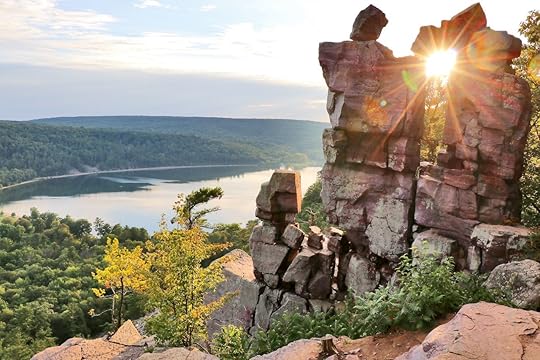
Madison, Wisconsin, is an urban-hiking juggernaut — and not just by Midwest standards. It has 14 state parks within an hour’s drive, a National Scenic Trail running through the city limits, and a watery necklace of lakeside paths that form its borders.
Add in the Badger State’s underrated reputation, and there’s usually plenty of elbow room on the area’s best trails to go along with those lovely views. You may not be summiting mountains, but within an hour’s radius around the city, you’ll find yourself wandering scenes of ancient glacial havoc, stepping through dense hardwood forests, and stumbling upon jeweled lake after jeweled lake. Below are our favorites places to do just that.
1. Picnic Point, Lakeshore Nature Preserve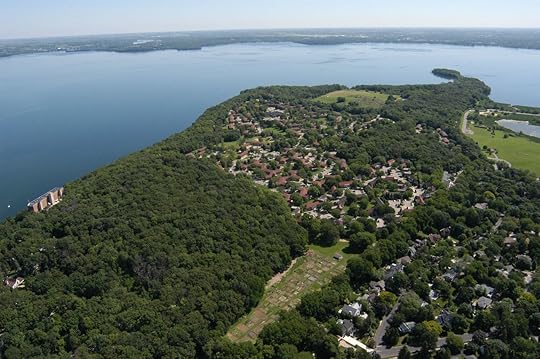
Photo:
Lakeshore Nature Preserve – UW-Madison
If there’s one quintessentially “Madison” hike, it’s this one. Picnic Point is the terminus of a narrow, mile-long peninsula jutting out from Lake Mendota’s south shore, part of Lakeshore Nature Preserve on the University of Wisconsin-Madison campus. Dense hardwoods line the wide dirt path, gulls always add in a soundtrack, and you’ll find fire circles for rent all along the peninsula’s length. (Free wood can be found between fire circles.)
The hike to the point can be pretty busy, especially on weekends. Hike the inland trails to Frautschi Point or Raymer’s Cove for more consistent seclusion. Raymer’s Cove is especially magical, sandstone cliffs protecting a tiny lagoon.
2. Indian Lake County Park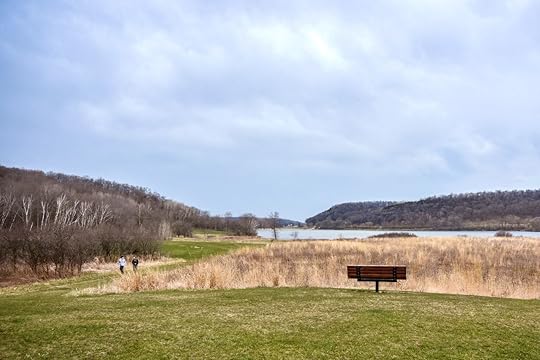
Photo: Jacqueline Kehoe
It’s hard to believe Indian Lake is a county park. From the main parking lot, climb up the high ridge to the circa-1857 chapel — you can even go for a kneel inside — and then continue onto the nearby overlook, where you’ll gaze over and across a glacial valley. The Ice Age National Scenic Trail winds through here, too, and the addition of the park’s standalone trails makes this a good spot for a sturdy day hike.
Back down toward the lake’s edge, you’ll find wide paths for hiking and cross-country skiing and snowshoeing come winter — there’s even a log-cabin warming hut for those chilly Wisconsin days. Probably a good stop for anyone daring enough to hike the entire Ice Age Trail in winter. Massive dog park makes this stop great for Fido, too.
3. Devil’s Lake State Park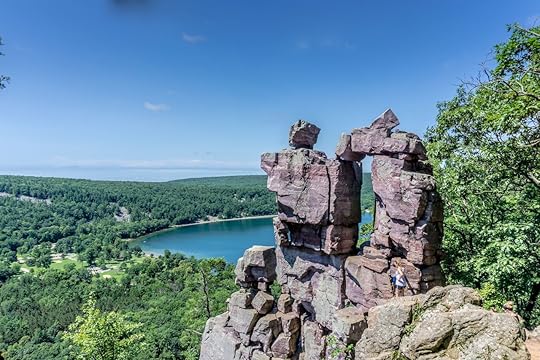
Photo: Adventures On Wheels/Shutterstock
For this one, come early and on a weekday. Devil’s Lake is Wisconsin’s most popular state park, thanks to its incredible views, outcroppings of stunningly purple Baraboo Quartzite, glacial erratics, lake access, and wide variety of hikes.
The Ice Age Trail does wander through here (perhaps you’re noticing a pattern?), but you’ll probably want to tackle the West Bluff Trail, a high climb riddled with delicately balanced boulders that overlooks the sparkling lake below. In warmer months, be sure to get on the lake, too. You can rent kayaks, canoes, and paddleboards from either shore.
For an easy, family-friendly hike that has no business being this good, look to the mile-long Tumbled Rocks Trail. Through the bottom of a talus slope (that’s where large rocks have accumulated at the base), the mostly flat path follows the water’s edge, between purple boulders caught mid-tumble to their watery fate.
4. The Ice Age National Scenic Trail, Cross Plains Segment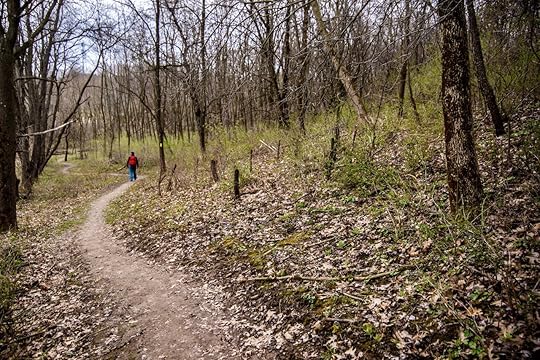
Photo: Jacqueline Kehoe
There are only 11 National Scenic Trails in the country, and the Ice Age Trail is one of them. The 1,200-mile path traces the edge of the last major ice sheet, all and only through Wisconsin, wandering straight through the town of Madison. For being urban, the Madison Segment is a good one. In between stints on and off the university golf course, you’ll get lost in long stretches of hardwoods, probably all by yourself.
But drive 30 minutes to Cross Plains, and you’ll hike up the edge of a terminal moraine — the last stop of a glacier’s slow, icy advance — through wildflowers and grasslands, along a dolomite ridge, and into a dense forest of pine, lost somewhere that could be mistaken for Colorado. All in all, this segment is nine miles long, including county roads. Note that nearby Table Bluff and Gibraltar Rock are also stand-out segments on this famed.
5. Cherokee Marsh, North Unit
Photo: Jesse Frey/Shutterstock
Cherokee Marsh, just barely north of the city, is technically a massive, 2,000-acre wetland complex that sits along the Yahara River. The north unit is classified as a fen, with prairies, bogs, hardwoods, and meadows popping just barely out of the water.
This spot is about contemplation and slowing down. Wander the maze of trails — all wide, flat, and uncrowded — note the Indigenous effigy mounds deep in the woods, pop off the boardwalks onto the overlooks, and take moments for silence. You might catch a cackling goose, a mallard duck, a black-billed cuckoo, or any of the hundreds of other birds that call this spot home. Birdwatchers will be captivated by the plethora of avian species, among them herons, egrets, and indigo buntings.
6. Blue Mound State Park and Cave of the Mounds
Photo: T-I/Shutterstock
Blue Mound State Park, at 1,716 ft in elevation, is the highest point in the area. That’s not a lot, but over the state park’s nearly 1,200 acres, it’s enough to mean over 20 miles of off-road single track and hiking trails with some 500 feet in elevation to play with. Definitely climb up the east and west towers for views onto the Baraboo range — an ancient mountain range clinging onto its last hills — and the Driftless Area to the south, where glaciers left the world unscathed. There’s also a swimming pool (handicap accessible!) and a nature center, amphitheater, horseshoe pits, and plenty of shady picnic areas.
If you want to take your walking underground, you are also close to Caves of the Mounds, a national natural landmark — the only designation of its kind that also includes privately held areas, as this one is. It costs nearly $20 for adults to enter the limestone cave, but it is worth the visit as this limestone cavern is one of the most striking caves in the Midwest.
7. University of Wisconsin-Madison Arboretum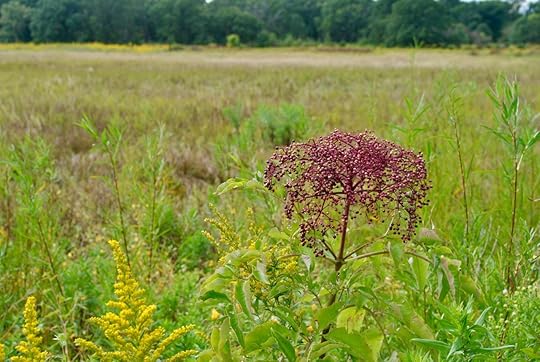
Photo: pdjordj/Shutterstock
As of February 2021, the University of Wisconsin-Madison Arboretum is officially a national historic landmark — and that should tell you a lot. This is the birthplace of ecological restoration, and its 73-acre Curtis Prairie is regarded as the oldest restored prairie in the world. But don’t picture amber waves of grain. Wild prairies are actually full of color and life, more like tall meadows that took a wild cue from their jungle cousins.
But the arboretum explores far, far more than just prairie. Exploring its 17-plus miles of trails takes you through nearly all of Wisconsin’s native ecosystems, like savannas, woodlands, and wetlands. The famed naturalist Aldo Leopold did the brunt of his work here, and now we hikers are reaping the rewards.
8. New Glarus Woods State Park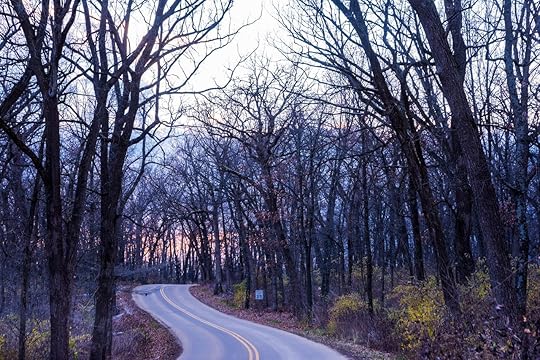
Photo: Schieve Photo/Shutterstock
New Glarus Woods State Park is a great camping destination — just 34 quiet, wooded sites (drive-in and walk-in) on the edge of this 435-acre park that connects to both the Sugar River State Trail and the Ice Age National Scenic Trail. Here, the forest meets the prairie for both tall, towering views and wide-open vistas.
But the other bonus of staying the night here? New Glarus Brewing Co. is less than two miles away. Arguably the state’s most beloved brewery, Spotted Cow might be its best-known brew, but the seasonal brews are worth a second or third walk over. Talk about a hike with a reward built-in at the end. 
The post 8 places that prove Madison, WI, is a totally underrated hiking destination appeared first on Matador Network.

Airstream’s new travel trailer
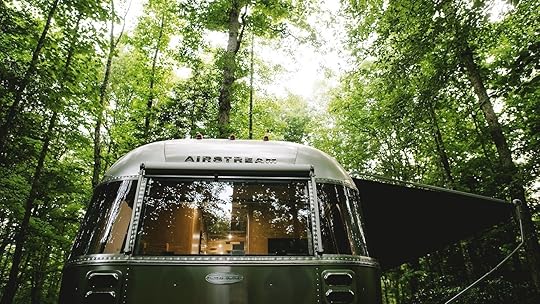
Traveling as a digital nomad doesn’t have to mean shelling out money for an expensive coworking space, or jetting between Starbucks on a road trip for the free Wi-Fi. You can take your work on the road, as well as your desk, with this new 30-foot Airstream travel trailer featuring a built-in office space designed for remote workers.
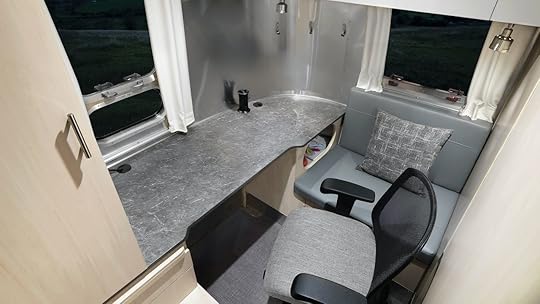
Photo: Airstream
In a press release, Airstream President and CEO Bob Wheeler, said, “The pandemic has permanently changed the traditional work landscape and we’re thrilled to offer a travel trailer that meets the needs of our times without compromise. Airstream has always provided the freedom of a mobile living, playing, and working space, but the Flying Cloud 30FB Office takes that promise to the next level with flexibility and comfort in a design inspired by real-world experience.”
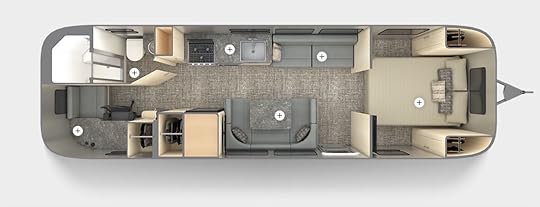
Photo: Airstream
The 2021 Airstream Flying Cloud 30FB Office includes a dedicated work space in the back of the vehicle, with a desk, power outlets, USB and HDMI ports, and a comfortable office chair to turn the space into a bedroom or just a relaxing area of the trailer. There are also blackout curtains on the three large windows of the office and a privacy divider. There’s enough storage for all the documents and tools a remote worker needs to have with them on the road with sliding drawers and cubbies. According to Traveling Lifestyle, there’s also 4G internet service provided by AT&T available via Airstream Connected, and buyers can fit an optional roof-mounted antenna that boosts Wi-Fi signals from nearby.
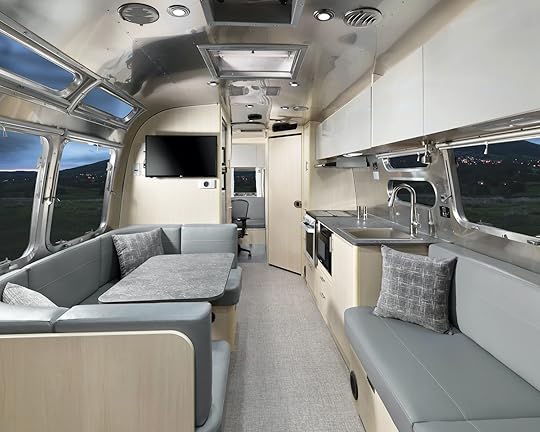
Photo: Airstream
According to Airstream, the addition of the office space does not take away from the great features of the traditional travel trailer. It also includes a queen bed in the front and convertible dinette, allowing for six travelers to sleep.
Unsurprisingly, the trailer doesn’t come cheap, costing $107,500. 
The post This new Airstream travel trailer was designed for digital nomads appeared first on Matador Network.

The difference between insurance
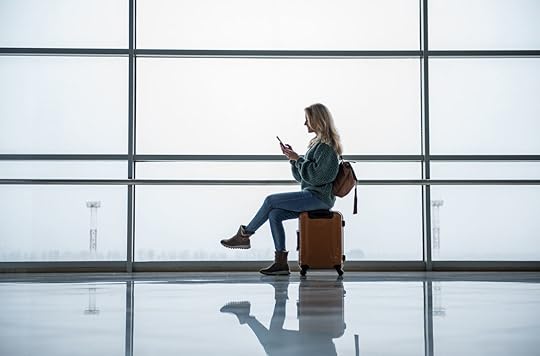
Navigating the world of travel insurance can be more daunting to travelers than traveling the world itself. It’s easy to view travel insurance the same way as the insurance bet in blackjack: an expensive gamble that slightly mitigates risk for the player, but ultimately buys you nothing but peace of mind. In reality, travel insurance can be more useful — and affordable — than you might think, even if you’re traveling domestically.
According to Daniel Durazo, director of communications at Allianz Partners, “One thing we have learned during the pandemic is to expect the unexpected, which is why travel insurance is such an important consideration for both domestic and international travel. So many unexpected events — anything from natural disasters and medical emergencies to travel delays or lost bags — can occur that would cause a traveler to cancel or interrupt their trip, so protecting your investment with travel insurance is a smart choice.”
With many countries requiring COVID-19-specific health insurance to enter, some companies have responded by offering travel insurance that covers some complications from COVID-19. Allianz, for example, offers several temporary accommodations designed specifically to cover trip cancellation, trip interruption, and emergency medical care related to COVID-19.
It’s not just international travel that’s getting a fresh take on travel insurance, either. As domestic travel remains the only option available for many, one insurance question persists: Do I need travel insurance for domestic travel?
Travelers have a tendency to feel safer inside their own borders compared to venturing abroad. As a result, travel insurance may feel less necessary. According to Brian O’Connell of InsuranceQuotes.com, that’s not exactly the case.
“Travelers still need travel insurance [domestically],” O’Connell says, “especially in the age of COVID. In the ongoing chaotic pandemic scenario, insurance that covers trip cancellation, trip delays, and trip medical coverage is almost mandatory for travelers. Those who want to travel without travel insurance may pay a big financial cost if they can’t make the trip but have paid for it, anyway. For those travelers on the fence who may decide to take out travel insurance, paying a moderate price (about 10 percent of the total trip cost) should provide robust trip coverage.”
With a seemingly limitless number of travel insurance plans at your fingertips, it can be tough to know which one is right for you, or whether you even need it at all. We’re here to clear those murky waters and help you navigate the intimidating world of travel insurance. These are the types of travel insurance plans you need to know to better understand which plan is right for you.
Package travel insurancePackage insurance is one of the most common and inclusive travel insurance plans. Also known as “comprehensive insurance” or simply “travel insurance,” a package plan is a catch-all for several different types of coverages, including cancellations, trip interruption, extreme weather, medical emergencies, evacuation, lost baggage, and more.
Who this is best for: Package insurance is one of the most popular travel insurance plans because it casts a wide net. This means it’s suitable for a wide range of travelers, including backpackers, families, solo travelers, and more.
What it covers: Trip cancellations, medical emergencies, interrupted trips, emergency evacuation, delayed baggage or trips, lost baggage, 24/7 assistance, and, depending on the plan, more.
Where the coverage can be used: A comprehensive package travel insurance plan can be used on pretty much any kind of trip, whether it’s a family vacation or solo backpacking adventure — domestic or international. The plans are designed to cover the trips travelers take most regularly.
When to purchase: Package plans are useful if you anticipate that you may need to cancel your trip for a medical issue, potentially inclement weather, or you want the convenience of pre-trip planning support. It can also give you peace of mind when it comes to potential medical emergencies that may occur while on your trip.
How much it costs: Anywhere from 4 percent to 10 percent of your total trip cost.
Trip cancellation and trip interruption insurance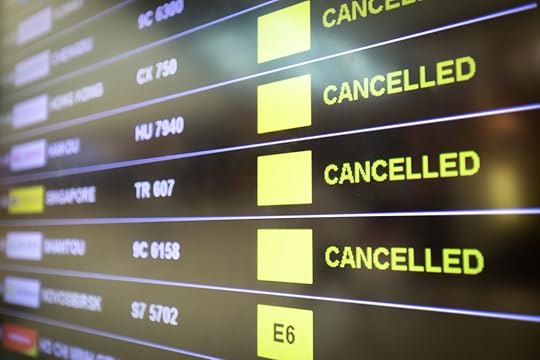
Photo: NicoElNino/Shutterstock
Trip cancellation insurance is fairly self-explanatory, as it reimburses you for prepaid non-refundable trip costs if you need to cancel your trip for a covered reason. Trip interruption insurance is slightly different. It reimburses up to 150 percent of your unused trip costs if you have to end your trip and return home early for a covered reason.
One important distinction is that trip cancellation insurance takes effect before your trip begins, while trip interruption insurance goes into effect after the trip has already started.
What, exactly, is covered varies based on what insurance company you choose. The Allianz Travel Cancel Anytime policy, for example, allows consumers to cancel their trip for almost any unforeseen reason and receive a refund for a portion of their non-refundable travel deposits. According to Durazo, the Cancel Anytime product covers 100 percent of non-refundable, pre-paid trip costs when canceling a trip for a reason covered by the policy and up to 80 percent of those costs when canceling for another unforeseen reason, though the percent may vary by product.
Who this is best for: Travelers seeking peace of mind when they think their trip may be canceled for some reason. This could include seniors in poor health who may experience sudden illness, backpackers traveling to Southeast Asia during monsoon season, or traveling to any destination where labor strikes may interfere with your plans.
What it covers: Both insurance types cover injury or illness, natural disasters, hurricanes, unavoidable schedule conflicts like jury duty, traffic accidnts, property damage, terrorism or mandatory evacuations, bankruptcy, assaults, work conflicts (including termination), illness or death of your destination host, labor strikes, and theft or loss of your passport or visa.
Where the coverage can be used: Both trip cancellation and trip interruption insurance can be used anywhere.
When to purchase: If you want the flexibility to cancel the trip last minute, or you anticipate some kind of interruption to your trip. It’s also a useful tool for achieving peace of mind if you’re concerned about being financially liable for a trip you may not be able to take or complete.
How much it costs: Expect to pay between 5 and 10 percent of your total trip cost.
Evacuation insuranceEvacuation insurance is designed for travelers who want coverage for emergency medical evacuations, international security evacuations, and repatriation. The travel insurance company will handle the coordination of any necessary evacuations, including payment to the rescue team.
Who this is best for: Travelers who anticipate being in a location without easy access to medical care or medical facilities may want to consider an evacuation plan. This includes backpackers trekking in a remote jungle, families taking a ski vacation where physical injury is possible, and seniors with potential health issues who may require emergency medical assistance.
What it covers: Coordination and payment for emergency medical transportation to bring you to a medical facility or return you home. It also includes language translation services in foreign countries where you may not understand the language, and the repatriation arrangements — including handling, negotiations, and payments — necessary for returning your body home if you die on your trip.
Where the coverage can be used: Anywhere from cruises to ski trips in the Alps, but evacuation insurance is particularly advised for people traveling to remote locations where evacuation may become necessary.
When to purchase: If you’re going on a highly physical trip and participating in activities like mountain climbing, hang-gliding, bungee jumping, or anything else that may result in injury. The plan can also offer peace of mind for more common vacations like skiing and hiking.
How much it costs: Depends on the traveler’s age, the trip length, and other factors, but you can expect an annual plan to cost around $200 — covering all trips taken that year — and a single plan to cost between $45 and $68.
Annual travel insuranceAnnual travel insurance covers you not just for a single trip, but for a year, making it useful for those who expect to travel multiple times during a given year.
Who this is best for: Annual insurance is best for business travelers, frequent backpackers, and even seniors and retirees who plan to take multiple trips per year.
What it covers: Many travel insurance types are available with an “annual” option. Make sure to check the full range of options to find the best fit for you.
Where the coverage can be used: Annual coverage can be used anywhere that standard single-trip coverage is also available.
When to purchase: Purchase annual insurance when you’re planning on taking multiple trips in a single year.
How much it costs: Varies widely by provider and type of coverage.
Travel medical insuranceTravel medical i bankruptsynsurance provides you with emergency medical coverage when you’re outside your home country. Before looking into medical travel insurance plans, check with your regular health insurance company to see what kind of coverage you already have when traveling.
Who this is best for: Travelers leaving their home country, people taking business trips abroad, when going abroad long-term for work or study, and for families or solo travelers moving to another country.
What it covers: Medical emergencies, accidents, emergency evacuations, and repatriation. Travel medical plans often include limited comprehensive-style benefits found in other plans as well, though the focus is usually on medical and evacuation coverage.
Where the coverage can be used: This coverage can be used anywhere, but is particularly advised for travelers leaving their home country.
When to purchase: This is one of the best travel insurance plans for travelers leaving their home country who are not concerned about cancellation, interruption, delays, and baggage, and if you’re engaging in physical or potentially hazardous activities. This is especially useful when traveling during the COVID-19 pandemic for any potentially unexpected hospital bills — just be sure to check that complications from COVID-19 are covered.
How much it costs: The cost of travel medical insurance is around $100, though it depends on the individual traveler, where you’re going, and the length of your trip.
Travel life insuranceThe three main types of travel life insurance are: accidental death, air flight accident, and common carrier. Accidental death covers blanket coverage for the entire trip, air flight accident covers only the flight portion of the trip, and common carrier covers death or dismemberment while traveling on any form of public transportation.
Who this is best for: Those planning to take transportation on their trips that may be considered unsafe or unreliable. Since travel life insurance is generally geared toward insuring against unlikely and severe accidents, it’s mainly for anyone who wants to give themselves and their families extra peace of mind.
What it covers: Coverage varies depending on the type of life insurance you purchase. Accidental death, which is not widely offered by insurance companies, pays benefits to the beneficiaries in the event of an accidental death. Air flight accident and common carrier insurances cover death or dismemberment that occurs on a flight or other public transportation. It covers disability benefits if you’re seriously injured and cannot work, pays out term life benefits to beneficiaries if you die in a travel-related accident, emergency medical evacuation, and repatriation for returning your body home if you die on a covered trip.
Where the coverage can be used: This coverage can be used anywhere, but is recommended for frequent travelers who may often take unreliable transportation.
When to purchase: Purchase this insurance if you’re a frequent traveler who wants to make sure your family is financially covered in the event of your accidental injury or death.
How much it costs: Varies by type and scope of what’s covered.
Baggage and personal items loss insurance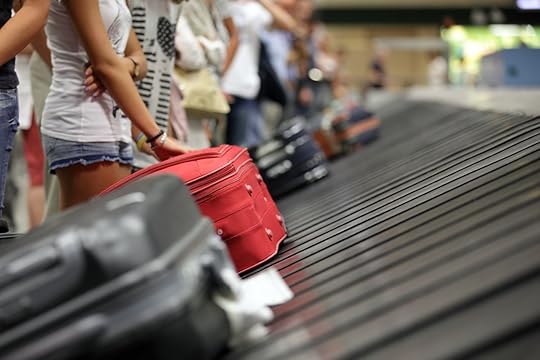
Photo: Brian A Jackson/Shutterstock
This is a very specific travel insurance that provides reimbursement for lost, stolen, or damaged baggage and other personal items. It’s usually valid throughout the entire duration of your trip.
Who this is best for: Frequent travelers who often check their bags. It’s also useful for families traveling with several suitcases, or backpackers who rely heavily on their equipment.
What it covers: This insurance reimburses travelers for lost, stolen, or damaged personal items throughout the duration of your trip — not just during your flight. This is particularly useful if carrying expensive items valued over $1,000, like laptops, cameras, and jewelry.
Where the coverage can be used: This coverage can be used anywhere.
When to purchase: Purchase when you’re traveling with a lot of luggage, or carrying highly valuable items.
How much it costs: Varies widely by company and what you’re insuring.
Rental car insuranceSince you never know what can happen on the road, particularly in other countries where driving rules may differ, it’s a good idea to have rental car insurance. This insurance alleviates the financial risks associated with getting into an accident, or damaging the vehicle, when driving a rental car either domestically or abroad. Some rental companies may provide insurance through the rental, though some travel insurance companies provide extra or complete coverage as well.
Who this is best for: Rental car insurance is designed for anyone renting a car on a vacation or trip. It’s particularly useful abroad, where road signs and driving habits may be confusing, or where people may drive on a different side of the road than you’re used to.
What it covers: There’s a wide range of options, but rental insurance typically includes coverage for repairs due to a collision, towing costs, and loss-of-use charges incurred by a rental car company. It may also include travel assistance services like roadside assistance while on a covered trip.
Where the coverage can be used: Rental car insurance can be purchased both domestically and abroad.
When to purchase: If you’ll be driving in difficult conditions, or in a country whose driving rules are unfamiliar to you. Iceland, for example, is a good place to buy rental car insurance, because they offer protection against sand, gravel, and ash, which often damage cars on the rugged Icelandic roads.
How much it costs: Rental car insurance usually costs between $10 and $20 per day.
Travel delay insuranceA watered-down version of trip cancellation insurance, trip delay insurance covers you in the event that unforeseeable circumstances delay your trip. The insurance reimburses you for additional transportation costs and expenses.
Who this is best for: Trip delay insurance is best for travelers looking to guard against the financial impact of a trip being delayed due to unforeseen circumstances, including serious weather events, transportation strikes, etc. It’s the perfect option for travelers worried about weather interfering with their travel plans.
What it covers: This insurance will reimburse you for lost pre-paid travel expenses, and costs incurred due to the delay, like meals, accommodations, communication, and transportation. To qualify for reimbursement, the delay must last for a specified period of time, which will be outlined in your plan.
Where the coverage can be used: It can be used to cover any pre-trip expenses associated with the delay, including food, accommodation, and cab rides. Keep in mind that there is usually a reimbursement limit, however, so you can’t go out and spend $200 on dinner while waiting for your delayed flight.
When to purchase: If you’re worried about weather or other unpredictable circumstances delaying your trip, or if you simply want peace of mind in advance of travel.
How much it costs: Varies widely by provider.
Change fee coverageChanging the dates of your flight is an infamously expensive and frustrating experience, and that’s why change fee coverage exists. If you need to change your airline ticket for a covered reason, you’ll be reimbursed for the fees charged by the airline.
Who this is best for: Travelers looking for a safety net in the event of unforeseen circumstances. It’s especially useful for backpackers traveling abroad in areas known for inclement and unpredictable weather.
What it covers: Change fee insurance covers the cost of changing your flight ticket for a range of approved reasons. These reasons typically include trip cancellation or interruption due to unforeseen circumstances or inclement weather.
When to purchase: Consider this insurance when traveling during the winter, or you anticipate severe weather may require you to change your flight.
How much it costs: Varies by location and transportation carrier.
Pre-existing medical condition coverageIf you have a diagnosed illness you may be eligible for pre-existing medical condition coverage. To obtain this type of coverage you must have a special waiver, which removes the pre-condition exclusion that might otherwise preclude you from receiving coverage.
Who this is best for: Anyone with a pre-existing condition.
What it covers: Any visit to a doctor or hospital that’s related to your pre-existing condition while traveling. These conditions may include high blood pressure, asthma, cancer, and a history of heart attacks.
When to purchase: It’s best to purchase the pre-existing medical condition waiver if you think your pre-condition may pose difficulties on your trip.
How much it costs: Varies by person.
Baggage delay
Photo: Marcel Poncu/Shutterstock
If you’ve ever arrived at your destination only to be informed that your luggage was lost and will take a few days to arrive, then you know the pain of not having baggage delay insurance. This is one of the most useful travel insurance plans when you’re put in a tight squeeze and when the airline loses your luggage, leaving you without your essential belongings. The insurance will reimburse you for the emergency purchase of essential items.
Who this is best for: Any traveler who wants to make sure they aren’t inconvenienced by the loss of luggage. Whether it’s backpackers, families, or business travelers, no one wants to go several days without the ability to replace their essential items.
What it covers: Baggage delay insurance will reimburse you for the purchase of essential items like toiletries, clothes, and phone charging cables when your baggage is delayed by an airline, bus, cruise ship, or train. You will usually receive a fixed inconvenience payment up to a certain dollar amount per day.
When to purchase: When you want to ensure you have a viable alternative if your luggage is unexpectedly lost.
How much it costs: Varies by your baggage and provider.
Flight insuranceFlight insurance is one of those safeguards all travelers wish were built right into the airline ticket itself. Unfortunately, if you have to change or cancel your flight, usually you won’t be reimbursed. Enter flight insurance. Flight insurance protects the cost of your flight if one of several incidents takes place.
Who this is best for: This insurance provides the ultimate flexibility for those who want to avoid expensive airline fees for changing or canceling a flight.
What it covers: Flight insurance reimburses you for the cost of your flight in the event of bad weather conditions (storms, hurricanes, and blizzards), unexpected flight delays that cause you to miss a connection, a mid-flight diversion that brings you to a different airport than expected, injury or illness before departure, and terrorist events in the vicinity of your destination. Flight insurance also usually includes trip cancellation or interruption coverage, lost or delayed baggage coverage, and flight delay coverage, which pays you if a flight is delayed for a specified amount of time.
When to purchase: Purchase this insurance when you want extra peace of mind before your vacation.
How much it costs: Varies by provider and scope.
Required to work insuranceIt’s a traveler’s worst nightmare to look forward to a vacation only to be forced to cancel due to work reasons. It’s even worse if you still end up having to pay for a vacation you never took. This is one of the only travel insurance plans that protects travelers who must cancel a trip due to work-related reasons.
Who this is best for: Travelers with unpredictable jobs, or quickly-changing work schedules, will want to seriously consider this insurance.
What it covers: This insurance protects travelers forced to cancel their trip due to work reasons. Covered reasons include working due to changes in work schedule, being directly involved in a merger, acquisition, product recall, or bankruptcy proceedings, or if your place of work has been the victim of a natural disaster, fire, flood, burglary, or vandalism. You must not be aware of the work requirement or circumstance when you purchase the insurance plan.
When to purchase: Purchase this insurance if your work situation is unpredictable, or if you own a small business that may require your emergency attention with little notice.
How much it costs: Varies by employment and provider. 
The post The difference between every type of travel insurance you need to know appeared first on Matador Network.

Denmark developing COVID passports

Denmark is hoping to restart its travel industry as early as summer 2021 thanks to its COVID passport initiative. The Scandinavian country has been extremely efficient in distributing vaccines to its population and the government is on track to offer vaccines to all 5.8 million of its citizens by June of this year. It’s hoped that it will be able to introduce and implement its COVID passport scheme as soon as possible.
“Denmark is still hard hit by the corona pandemic. But there are parts of Danish society that need to move forward, and a business community that needs to be able to travel,” Morten Bødskov, Denmark’s acting finance minister, told CNN last week. There is mounting pressure to open the borders to those who have had the vaccine due to the travel, hospitality, and entertainment industries being hit so hard by the pandemic.
“We have more than 800,000 jobs in Denmark that are linked to trading with the world so this is fundamental…if we want to start to export again and trading again, see business people meet again, things like the corona passport are fundamental to making that happen,” Danish Foreign Minister Jeppe Kofod shared with CNN.
Lars Ramme, the head of tourism for the Danish Chamber of Commerce, added, “If you start when COVID-19 has left society, it will be too late. With this project we’re very positive we will have a summer of joy, of football, of music. So better get started sooner, now, to plan.”
Even though the concept of a digital COVID passport has been discussed since the start of the pandemic, this issue remains controversial. Finding a way to share and store data securely is a challenge that the Danish government plans to tackle with the help of technology and innovation.
The options the government is exploring include a cloud-based technology where information is stored in bulk as well as blockchain — a system that is more complex but superior when it comes to data protection. IBM’s Copenhagen developers have already created a “Digital Health Pass” based on blockchain technology which they’re using to store information on new virus variants. The pass has a QR code that can be quickly scanned to reveal medical data as needed.
If Denmark’s plan succeeds, travel may become a lot easier by June, offering an example to other nations across the world. 
The post Denmark is working on digital COVID passports to restart travel by summer appeared first on Matador Network.

Free cruises in 2021

In honor of the year 2021, Virgin Voyages is giving away 2,021 cruise voyages over the course of a year. The free cruises are part of the company’s “Shipload of Love” promotion, and will be given to individuals nominated by their loved ones, who believe they deserve a much-needed vacation.
In an announcement, Virgin Voyages said, “This initiative is meant to pay tribute to those who have impacted our lives in a meaningful way. No good deed is too small, and no individual is to be overlooked. Love and beauty exist in the eye of the beholder, including our unsung heroes, who have shown us that their embrace makes the world a better place.”
Fittingly, the giveaway launched on February 14 and will continue all year.
“Serving as a tribute to those who have lifted us up, taken care of us and our loved ones and those who have brought positivity into the world,” the company said, “this giveaway is the perfect kickoff to showing our appreciation.”
You can enter your email on the Virgin Voyages website for updates about the contest and how to nominate someone. 
The post Virgin Voyages is giving away 2,021 free cruise vacations this year appeared first on Matador Network.

Matador Network's Blog
- Matador Network's profile
- 6 followers



